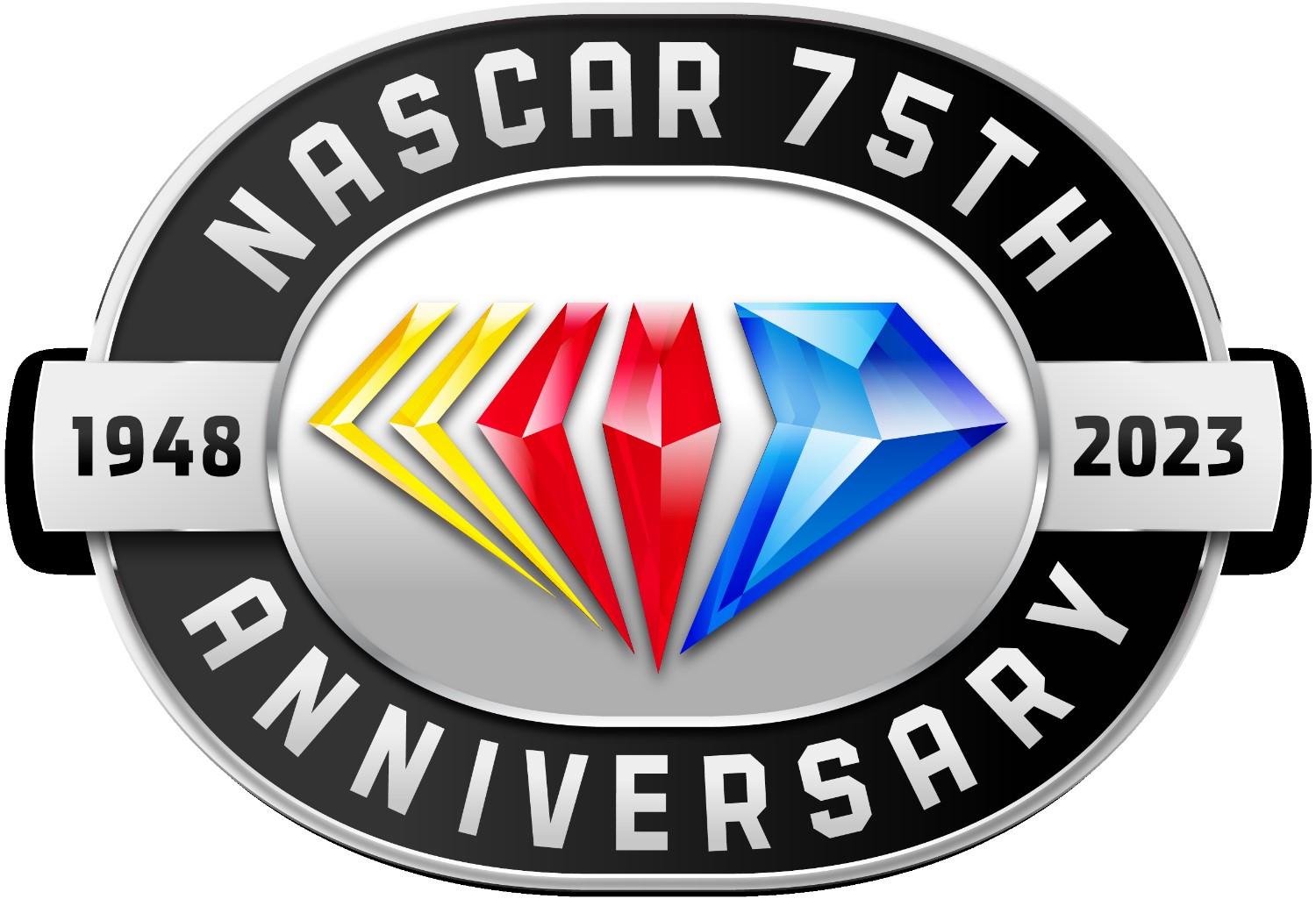NASCAR: Series to celebrate 75th year in 2023
On December 14, 1947, Bill France gathered 40 people for four days of meetings (Dec. 14 – 17) at the Streamline Hotel in Daytona Beach. The distinguished group represented the most influential names in the racing industry at the time and included drivers, mechanics, promoters, car owners, journalists, businessmen, and a recording secretary.
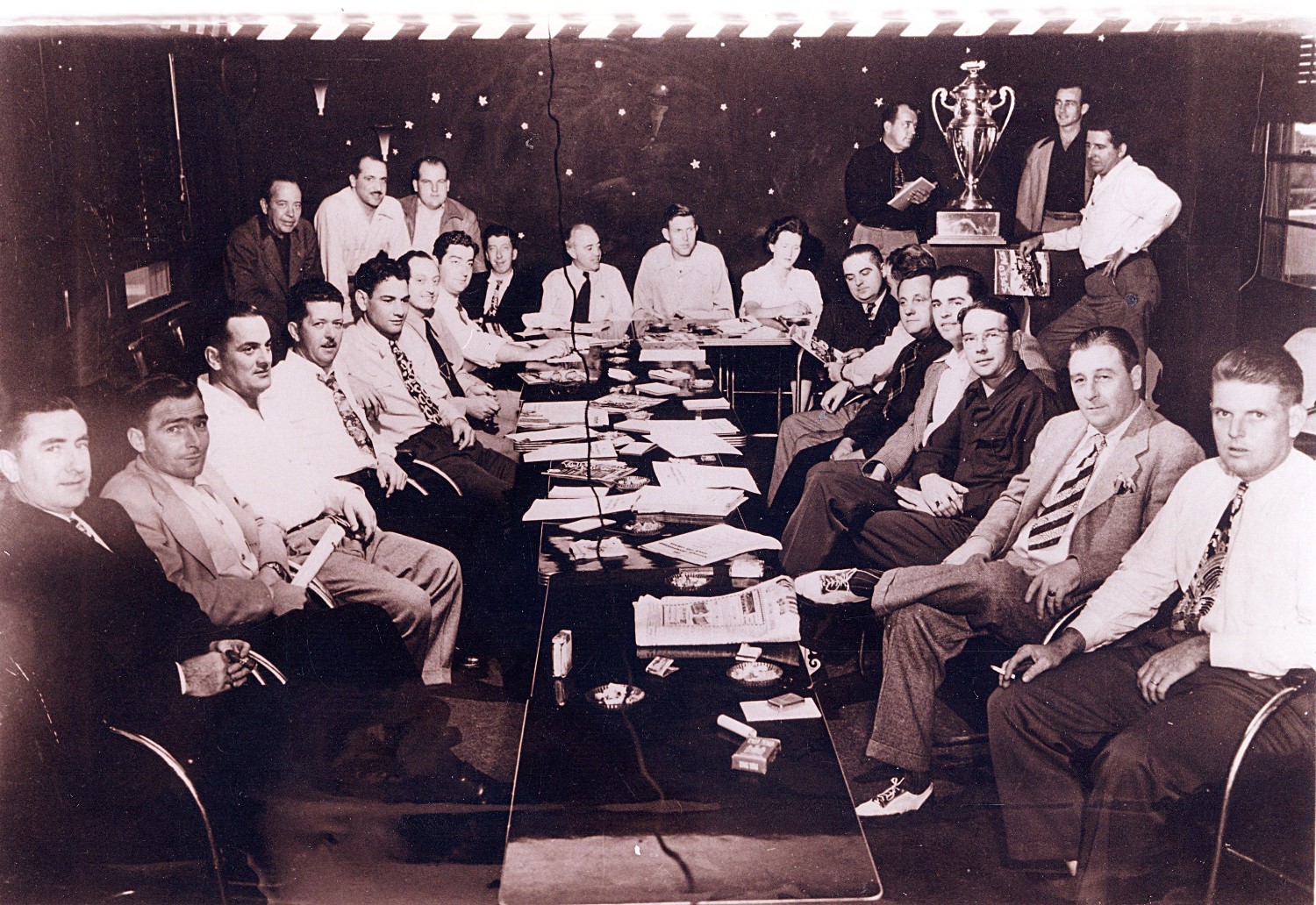
The National Association for Stock Car Auto Racing (NASCAR) was born from that meeting and though he knew what was needed, not even Bill could envision what the sport would become.
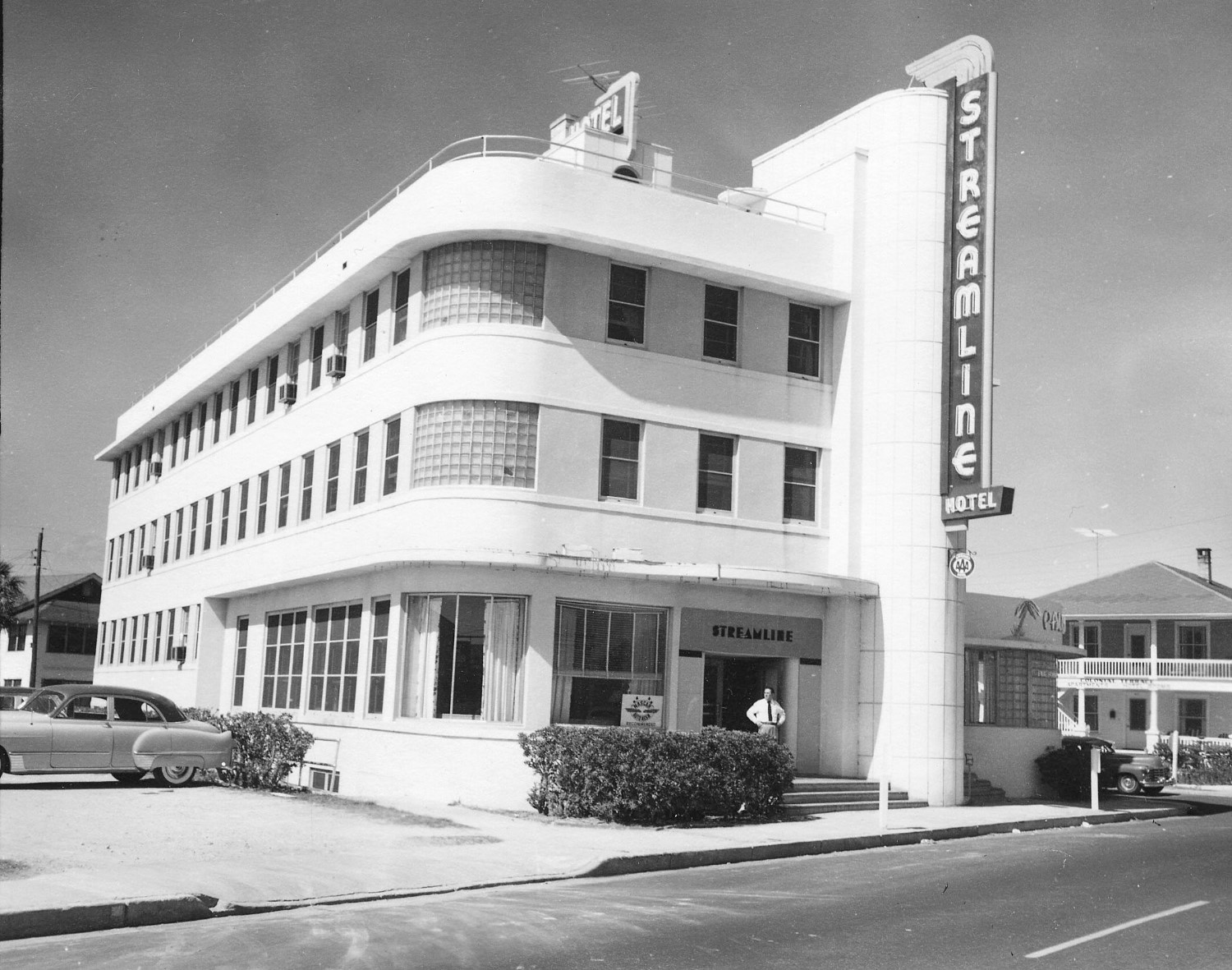
“Stock car racing has got distinct possibilities for Sunday shows and we do not know how big it can be if it’s handled properly… It can go the same way as big car racing (Indianapolis), I believe stock car racing can become a nationally recognized sport by having a National Point Standing. Stock car racing as we’ve been running it is not, in my opinion, the answer… We must try to get track owners and promoters interested in building stock car racing up. We are all interested in one thing — that is improving the present conditions. The answer lies in our group right here today to do it.”
– Bill France Sr. on December 14, 1947 speaking at NASCAR’s organizational meeting at the Streamline Hotel in Daytona Beach, Florida.
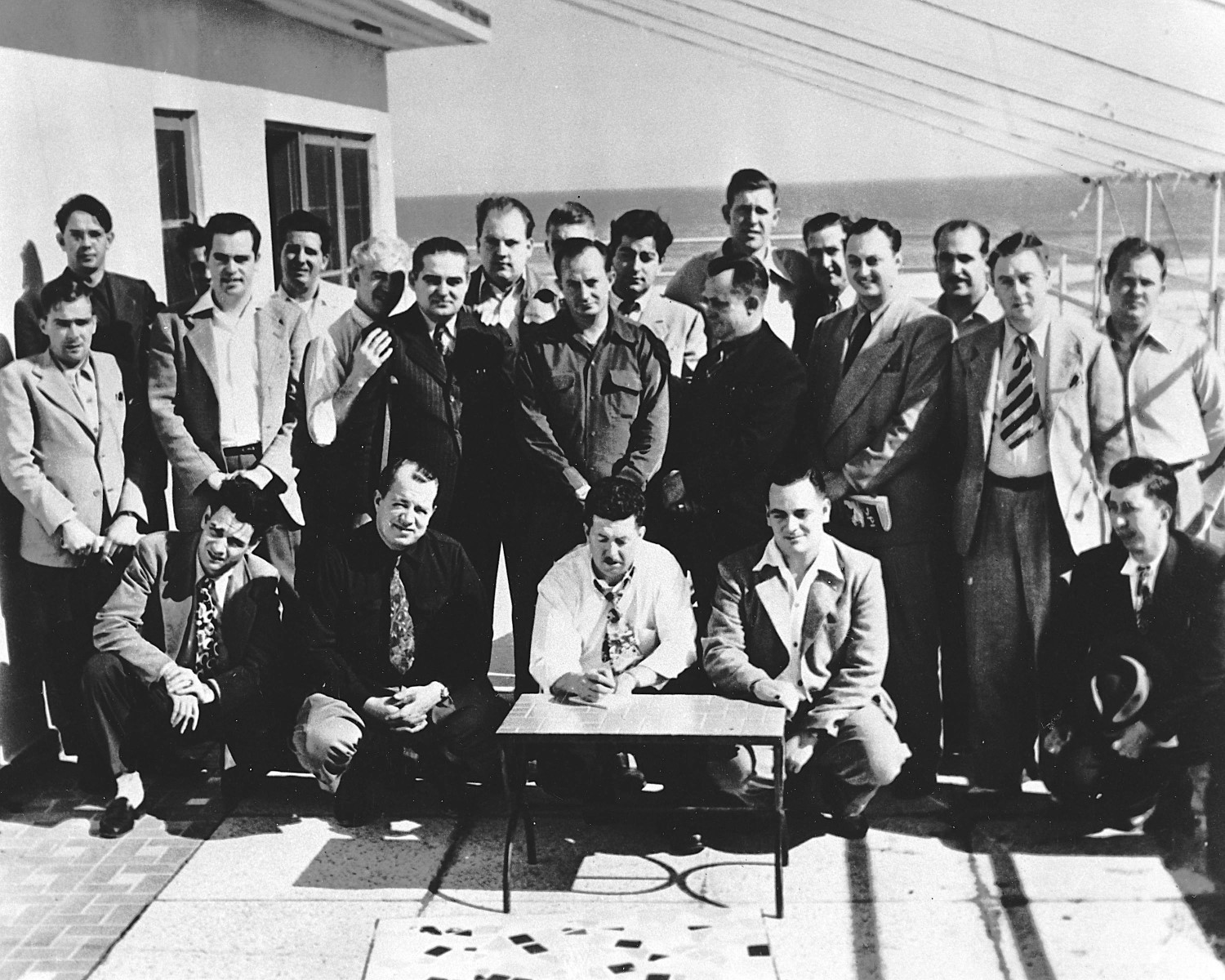
In the last 75 years, NASCAR has expanded globally, with series in the U.S., Mexico, Canada, Brazil and Europe, and has produced some of the best drivers in motorsports.
The 75th anniversary of the series will be celebrated throughout 2023.
Those in Attendance
- Mildred Ayres – Recording Secretary
- Bob Berry
- Eddie Bland
- Ed Bruce
- Red Byron
- Jimmy Cox
- Fred Dagavar
- Chick DiNatale
- Bob Flock
- Fonty Flock
- Bill France Sr.
- Tom Gallan
- Tom Grback
- Alvin Hawkins
- Jack Higgins
- Freddie Horton
- Bernard Kahn
- Joe Littlejohn
- Tom Lovarco
- Frank Mundy
- Bill Obeby
- Bob Osiecki
- Sam Packard
- Raymond Parks
- Bill Parry
- Jack Peters
- Jimmy Quisenberry
- Bob Richards
- Jimmy Roberts
- Larry Roller
- Joe Ross
- Ed Samples
- Lucky Sauer
- Buddy Shuman
- Bill Streeter
- Harvey Tattersall Jr.
- Marshall Teague
- Bill Tuthill
- Red Vogt
- Fred Zimmerman
NASCAR HISTORY
Since its inception as the Strictly Stock Division, what is now the NASCAR Cup Series has evolved into one of the most popular sports in the world. In the beginning, the race cars were driven off the street and onto the track, but as safety technology advanced, changes were made to cars, as the racing machines of today are more complicated and technological than ever. NASCAR has grown with the series from the small organization formed on the sands of Daytona Beach to a thriving sport.
Below are some key milestones in the history of NASCAR:

DECEMBER 14, 1947 – Bill France Sr. organizes a meeting at the Streamline Hotel in Daytona Beach, Fla., to discuss the future of stock car racing. NASCAR, the National Association for Stock Car Auto Racing, is conceived.
FEBRUARY 15, 1948 – NASCAR runs its first race in Daytona Beach at the beach road course. Red Byron wins in a Ford.
JUNE 19, 1949 – The first NASCAR “Strictly Stock” (current NASCAR Cup Series) race is held at Charlotte (N.C.) Fairgrounds Speedway. Jim Roper wins the race, Bob Flock wins the first pole and Sara Christian, who finishes 14th, is credited as the first woman to race in NASCAR’s premier division.
OCTOBER 16, 1949 – Red Byron wins the first NASCAR Strictly Stock championship.
1959 – Jim France, son of Bill France Sr., joins the staff at International Speedway Corporation (ISC). He worked in all phases of operation in his early years of the company and moved up to serve as vice chairman/executive vice president of NASCAR before ultimately being named Chairman.
FEBRUARY 22, 1959 – The high-banked 2.5-mile Daytona International Speedway hosts the first Daytona 500. More than 41,000 fans are in attendance for the inaugural event in which the winner isn’t decided until 61 hours after the checkered flag flies, as the result of a dramatic photo finish. Lee Petty is declared the winner by two feet after conclusive evidence from a newsreel is reviewed by Bill France Sr.

DECEMBER 1, 1963 – Wendell Scott becomes the first African-American to win a race in NASCAR’s premier series, beating Buck Baker at Jacksonville (Fla.) Speedway.
1967 – Mario Andretti becomes the first foreign born driver, and the first USAC IndyCar driver, to win the Daytona 500, beating Holman & Moody Ford teammate Fred Lorenzen. To date, he remains the only driver ever to win the Indianapolis 500 (1969), Daytona 500 (1967) and the Formula One World Championship, and, along with Juan Pablo Montoya, the only driver to have won a race in the NASCAR Cup Series, Formula One, and an Indianapolis 500.
1970 – Lesa France Kennedy, daughter of Bill France Jr., joins the staff at International Speedway Corporation (ISC). Instrumental in the growth of ISC and the advancement of motorsports, she has moved up to serve as vice chairperson of NASCAR and vice chairperson of the Board of Directors for ISC.
JANUARY 10, 1972 – The founder of NASCAR, Bill France Sr., hands over the reins of leadership to his son Bill France Jr., who becomes the second president in NASCAR’s history.
FEBRUARY 20, 1977 – Janet Guthrie becomes the first woman to compete in the Daytona 500. She qualifies 39th and finishes 12th.
FEBRUARY 18, 1979 – CBS presents the first live flag-to-flag coverage of a 500-mile NASCAR event with the Daytona 500, a show not soon to be forgotten as Richard Petty avoids an incident between Cale Yarborough and Donnie Allison on the last lap to win the race. With Petty racing by to take the checkered flag, Yarborough, Donnie Allison and Bobby Allison are involved in a fight in the infield grass, between Turns 3 and 4.
NOVEMBER 18, 1979 – Richard Petty wins his record seventh series championship.
JULY 4, 1984 – Richard Petty earns his 200th win in the Firecracker 400 at Daytona International Speedway, setting a mark that has yet to be challenged.
NOVEMBER 15, 1992 – One of the most significant races in NASCAR history, the 1992 season finale at Atlanta Motor Speedway. It is Richard Petty’s last race and Jeff Gordon’s first in NASCAR premier series competition. Five drivers are eligible to win the title as the race began. Driver-owner Alan Kulwicki ends up leading one more lap than Bill Elliott, to earn the five-point bonus for leading the most laps – and win the championship by 10 points.
AUGUST 6, 1994 – The series schedule expands to include the famed 2.5-mile Indianapolis Motor Speedway. Jeff Gordon claims the win in the first Brickyard 400.

OCTOBER 23, 1994 – Dale Earnhardt joins Richard Petty as the second driver in series history to win seven NASCAR series championships clinching the title at Rockingham, N.C.
JANUARY 2003 – NASCAR unveils the NASCAR Research and Development Center in Concord, N.C.
2004 – NASCAR begins its first season under the banner of Nextel, with the series becoming known as the NASCAR NEXTEL Cup (now the NASCAR Cup) Series. A new format is implemented to determine the series champion and is known as the Chase for the NASCAR NEXTEL Cup (now NASCAR Cup Series Playoffs).
MAY 23, 2010 – The inaugural NASCAR Hall of Fame class is inducted in Charlotte, N.C.: Bill France Sr., Bill France Jr., Richard Petty, Dale Earnhardt and Junior Johnson.
FEBRUARY 17, 2013 – Danica Patrick makes history by winning the Busch Pole Award for the 2013 Daytona 500, becoming the first female to win a pole in NASCAR premier series history.
JANUARY 30, 2014 – NASCAR Chairman Brian France announces championship format change, virtually guaranteeing a berth in the NASCAR playoffs for each race winner. Key among the changes is a ‘Championship 4’ finale where the highest finisher among the four eligible drivers at Homestead-Miami Speedway would be crowned champion.

NOVEMBER 20, 2016 – Jimmie Johnson makes history with his record-tying seventh NASCAR premier series title; joining NASCAR Hall of Famers Richard Petty and Dale Earnhardt as the series leaders with seven championships.
DECEMBER 1, 2016 – NASCAR and Monster Energy announce a multi-year agreement for the premier series entitlement as well as the prestigious annual NASCAR All-Star Race. Monster Energy, began its tenure as naming rights partner on Jan. 1, 2017, will become only the third company to serve as the entitlement sponsor in NASCAR premier series history, following RJ Reynolds and Sprint/Nextel.
2017 – NASCAR introduces a new three-stage format of racing across all three national series racing. On the eve of Daytona Speedweeks, Kennedy unveils a flagship tenant, Bass Pro Shops, at ISC’s ONE DAYTONA, a 300,000-square foot premier mixed-use and entertainment destination across the street from Daytona.
APRIL 27, 2018 – In a move designed to strengthen a relationship that dates back more than 60 years, NASCAR announces the acquisition of the Automobile Racing Club of America. Both NASCAR and ARCA, a Midwest-based sanctioning body for stock car auto racing, share a long history: ARCA founder John Marcum raced against Bill France Sr. and worked as a NASCAR official. More recently, the series has provided a valuable platform for talented drivers looking to make it to NASCAR’s national series.
2018 – Jim France, who joined ISC in 1959, assumes the role of NASCAR Chairman and CEO. He was elected to the ISC board in 1970 and has served as the company’s secretary, assistant treasurer, vice president, chief operating officer, executive vice president and president. He grew up in the early years of stock car racing, living and learning every detail of the sport from his own experiences, and from his father Bill France Sr., the founder and first president of NASCAR, and brother Bill Jr., NASCAR’s former president, chairman and CEO.
The France Family
William H.G. France – NASCAR Founder
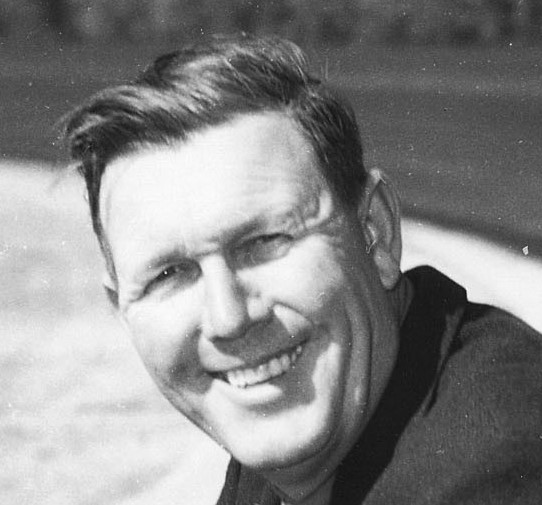
They called him “Big Bill,” and only in part because of his 6-foot-5 stature.
William Henry Getty France was larger than life it seemed, during the years of founding and then building a sport. In the years since his death in 1992, his legend has grown, along with that sport.
France spearheaded NASCAR from its beginning and directed it to its current role as the world’s largest stock car racing organization. Born in Washington, D.C., on Sept. 26, 1909, he came to Daytona Beach, Fla., in the 1930s.
In 1936, he helped lay out the first beach/road course in Daytona Beach. In the first race on Daytona Beach & Road Course he finished fifth. Starting in 1938, he helped promote races on the sands. That endeavor was interrupted by World War II but resumed in 1946.
In 1947, France became the driving force behind the establishment of the National Association for Stock Car Auto Racing. The new organization was called NASCAR, resulting from a famous meeting at the Streamline Hotel on A1A in Daytona Beach – a structure that stands to this day, as a racing landmark.
Things moved quickly in the 1950s and 1960s for NASCAR. As the sanctioning body’s first president, France built two superspeedways that came to personify the sport – 2.5-mile Daytona International Speedway and 2.66-mile Talladega (Ala.) Superspeedway. Along the way, he also founded the International Speedway Corporation that operates those two tracks and others involved in NASCAR’s three national series –NASCAR Cup Series, NASCAR Xfinity Series and NASCAR Camping World Truck Series.
In January 1972, France stepped down as president of NASCAR and handed the reins to his son William C. France. The elder France continued to be a consultant for a number of years, in addition to serving as ISC chairman/president.
After retirement he was inducted into the Florida Sports Hall of Fame, the International Motorsports Hall of Fame, the National Motorsports Press Association Hall of Fame and the American Auto Racing Writers and Broadcasters Association Hall of Fame. The honors were the result of vision – and good, old-fashioned hard work. In the words of noted motorsports journalist Larry Woody, “Big Bill France looked at an untamed diversion called stock car racing and saw a promising future … he founded NASCAR and through sheer iron will hammered it into shape.”
“Big Bill” France died in June 1992. He left behind a lasting legacy. He remains larger than life – still.
In May 2010, France was a member of the inaugural class inducted into the NASCAR Hall of Fame.
William Clifton France
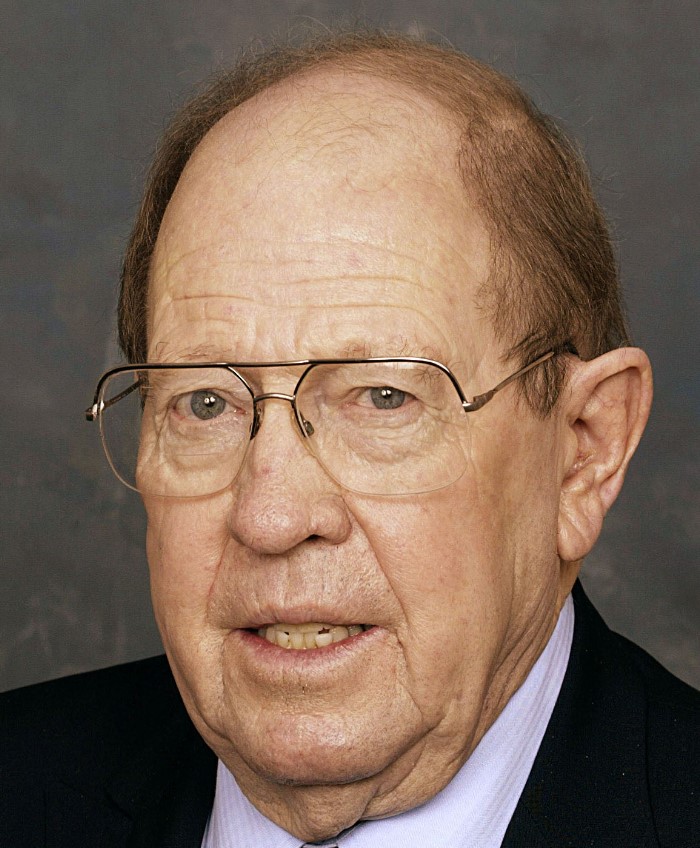
William (Bill) Clifton France is remembered – and revered – as the man who followed his visionary father at NASCAR’s helm, in the process becoming a visionary himself, as he guided NASCAR to unprecedented levels of popularity. He combined pragmatism with optimism, an approach that resulted in a calculated – and adventurous – road to success.
France, who died in June 2007 at the age of 74, grew up in the formative years of stock car racing, living and learning every detail of the sport from his own experiences, and those of his father William Henry Getty France – who was known as Bill Sr. or “Big Bill” because of his 6-foot-5 stature. Bill Sr. was the founder and first president of NASCAR.
Bill France Jr. became NASCAR’s president in January 1972, replacing his father and becoming only the second president of the world’s largest auto racing sanctioning body. His emergence coincided with the sport’s emergence, and its eventual ascent to become America’s No. 1 form of motorsports and the nation’s second-most popular sport overall.
Bill France Jr. remained president until November 2000, when Mike Helton took over the position. At that time, France announced the formation of a NASCAR board of directors on which he served as chairman and CEO until October 2003, when he was replaced by his son, Brian Z. France. From that point, Bill France Jr. served as vice chairman until his death.
His involvement in NASCAR was far-reaching, but it began in the sport’s “grass roots.” During his career, he did everything a person can, in stock car racing. He flagged events, scored, promoted, served as a steward and even raced a few times in the 1950s.
Before being named NASCAR’s president, Bill France Jr. served six years as vice president and prior to that served in other capacities. In addition to his NASCAR duties, he served as chairman of the board of the International Speedway Corporation (ISC), which at the time oversaw the Daytona International Speedway, Darlington Raceway and Talladega Superspeedway, among other racing facilities around the country. He also served as a director of the National Motorsports Council of ACCUS-FIA.
Born in Washington, D.C., Bill France Jr. was less than two years old when his parents moved to Daytona Beach, Fla., in 1934. He attended Seabreeze High School, where he played basketball and later attended the University of Florida in Gainesville. He served two years in the United States Navy and turned to a full-time career in racing when his service stint ended.
In addition to his son, other members of France’s family have played – and continue to play – major roles in the operation of NASCAR. His late wife, the former Betty Jane Zachary, served as executive vice president/assistant treasurer for NASCAR before she passed away in 2016. His daughter Lesa France Kennedy serves on the board of NASCAR, is vice chairwoman and executive vice president of NASCAR. Younger brother Jim served as vice chairman/executive vice president of NASCAR and chairman of ISC for many years until being named NASCAR’s chairman and CEO in 2018.
In May 2010, Bill France Jr. was a member of the inaugural class inducted into the NASCAR Hall of Fame.
JAMES C. FRANCE

James C. (Jim) France is chairman and chief executive officer of NASCAR and the chairman of IMSA today.
France grew up in the early years of stock car racing, living and learning every detail of the sport from his own experiences, and from his father Bill France Sr., the founder and first president of NASCAR, as well as guidance and direction from his mother, Anne B. France, and older brother Bill Jr., NASCAR’s former president, chairman and CEO.
Joining International Speedway Corporation (ISC) in 1959, France worked in all phases of operations in his early years with the company. He was elected to the ISC board in 1970 and has served as the company’s secretary, assistant treasurer, vice president, chief operating officer, executive vice president and president.
France has been involved in motorsports most of his life. In addition to stock cars, he has also been a strong supporter of both sports car and motorcycle racing in the United States, evident by his professional involvement in those sports. In 1999, he founded GRAND-AM Road Racing; in 2012, he was the driving force behind the merger of GRAND-AM and the American Le Mans Series, which began operation as one entity in 2014 in what is now known as the International Motor Sports Association (IMSA).
He served as starter for the U.S. Motorcycle Grand Prix in the late 1960s, raced on dirt tracks for nearly five years and has been a member of the American Motorcyclist Association for almost 26 years. In addition, France has raced karts on both dirt and asphalt.
France has served as a board member for ACCUS (Automobile Competition Committee of the United States). France was on active duty in the U.S. Army from 1969-1970, serving in Vietnam.
France was born and raised in Daytona Beach, Fla., and graduated from Seabreeze High School. He attended Florida Southern College in Lakeland, Fla., and earned a business degree in 1968.
France resides in Daytona Beach, Fla., with his wife, Sharon.
LESA FRANCE KENNEDY

Lesa France Kennedy is Executive Vice Chair of the National Association of Stock Car Auto Racing (“NASCAR”). Kennedy leads NASCAR, one of the premier sports and entertainment properties in the world, including its three national series, three regional series, three international series and 16 of the nation’s major motorsports entertainment facilities.
Previously, Kennedy served as Chief Executive Officer and Vice Chairperson of the Board of Directors for International Speedway Corporation (ISC), a motorsports entertainment company acquired by NASCAR in October 2019.
In her more than 30-year career with ISC, she advanced through several key executive positions with increasing responsibility including Secretary; Treasurer; Executive Vice President; and CEO.
Kennedy led two major racetrack development projects in building Kansas Speedway and Chicagoland Speedway and expanding NASCAR’s portfolio into two major Midwest markets. She also spearheaded revitalization with Phoenix Raceway completing its renovation in 2018 and Daytona International Speedway’s $400 million redevelopment opening in 2016. Kennedy was the driver behind this massive project that created a state-of-the-art motorsports facility and revolutionized the sport and fan experience. That same year, Daytona International Speedway was named Sports Facility of the Year by SportsBusiness Journal.
Just across from Daytona International Speedway, ONE DAYTONA, NASCAR’s mixed-use and entertainment destination, is quickly becoming known as Kennedy’s legacy project. Home to 300,000 square feet of premium retail, dining and entertainment, the outdoor lifestyle center touts several national tenants including Bass Pro Shops®, Cobb Theatres, P.F. Chang’s, and an exclusive Marriott Autograph Collection® hotel, among others. The transformational development in her hometown of Daytona Beach not only creates a year-round destination for residents and the area’s more than 10 million annual visitors, but extends the race experience for Speedway guests.
Kennedy has been honored with many awards. Of note, she has been featured on Forbes “Most Powerful Women in Sports” list three times, securing the top honor in 2015; named to the Cynopsis Sports Hall of Fame; and named one of ADWEEK’s ‘Most Powerful Women in Sports’ for two consecutive years. She received the “Women Making History” award from the National Women’s History Museum, and was selected by SportsBusiness Journal as the “Most Influential Woman in Sports Business.”
Kennedy serves on the Board of Directors of the International Motor Sports Association (IMSA), The NASCAR Foundation and the Board of Advisors of Moffitt Cancer Center. A Daytona Beach, Fla. native, Kennedy earned her Bachelor of Arts degree in economics and psychology from Duke University
